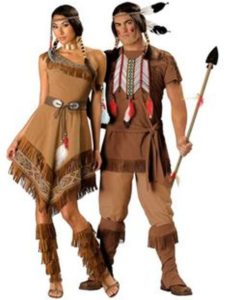Our culture is a not a costume
 Submitted by Steven Rickard
Submitted by Steven Rickard
A few days ago, a buddy of mine made some really strong points on a specific topic. I pretty much felt the same way how he was feeling while he was discussing Halloween costumes and how there’s some of them that are depicting people of different cultures. Mainly First Nations people.
With Halloween just around corner, the usual things that are expected are: Halloween decorations, haunted houses, skeletons, jack-o’-lanterns, and treat or treaters going door-to-door. But somehow Halloween has become the one day of the year where I can’t help but shake my head at some people. What I’m getting at is cultural appropriation.
When I was going to high school a few years ago, I witnessed a couple of people dressing up as a Native person on Halloween; wearing buckskin, the headdress, and sporting the war paint on the face. The whole get-up. The things you sometimes hear mostly is; “I’m honouring your people,” or “it’s just a costume, get over it,”—most responses are of that nature.
If you do really want to honour our people, just don’t do it that way.
There’s a fine line between cultural appropriation and cultural appreciation.
Going back through our history as First Nations people in Canada, is that we had our rights taken away, we weren’t considered “persons” by the federal government and by the Crown, and also the residential school legacy; where our children were forcibly “taught” that our people were “barbarians” (which ultimately resulted in loss of language and self-identity).
If we wanted to be like any other Canadian citizen at that time, then we had to give up our Indian status. Including going into the military, wanting to get a university education, or being away from their community for a long time resulted in enfranchisement (loss of status).
It was also illegal for us to practice our beliefs; including the banning of the potlatch (banned under the Indian Act).
With regards to headdresses, there’s a deep cultural meaning behind them. When a community leader receives one from that community, there’s a ceremony that’s conducted, along with a series of protocols that come with receiving one. There also comes a big deal of responsibility to carry a headdress and to wear one.
Today we see a lot of our leaders wearing those headdresses, and why? Because they’ve EARNED that authority. Not everyone carries or wears a headdress, because we don’t have that authority. Same goes with the Eagle Feather. When you’re given a feather, it symbolizes being given a medal for doing something that’s considered highly honourable or courageous you’ve done for people and/or the community.
I remember Grand Chief Derek Nepinak (Assembly of Manitoba Chiefs) mentioned during his time in leadership that you don’t ever ask for a headdress, because he never asked for one. Just because you’re voted in as Chief, it doesn’t give you the authority to have one. It’s something that’s earned.
The only way to get people aware about this matter is through passing on that knowledge.


